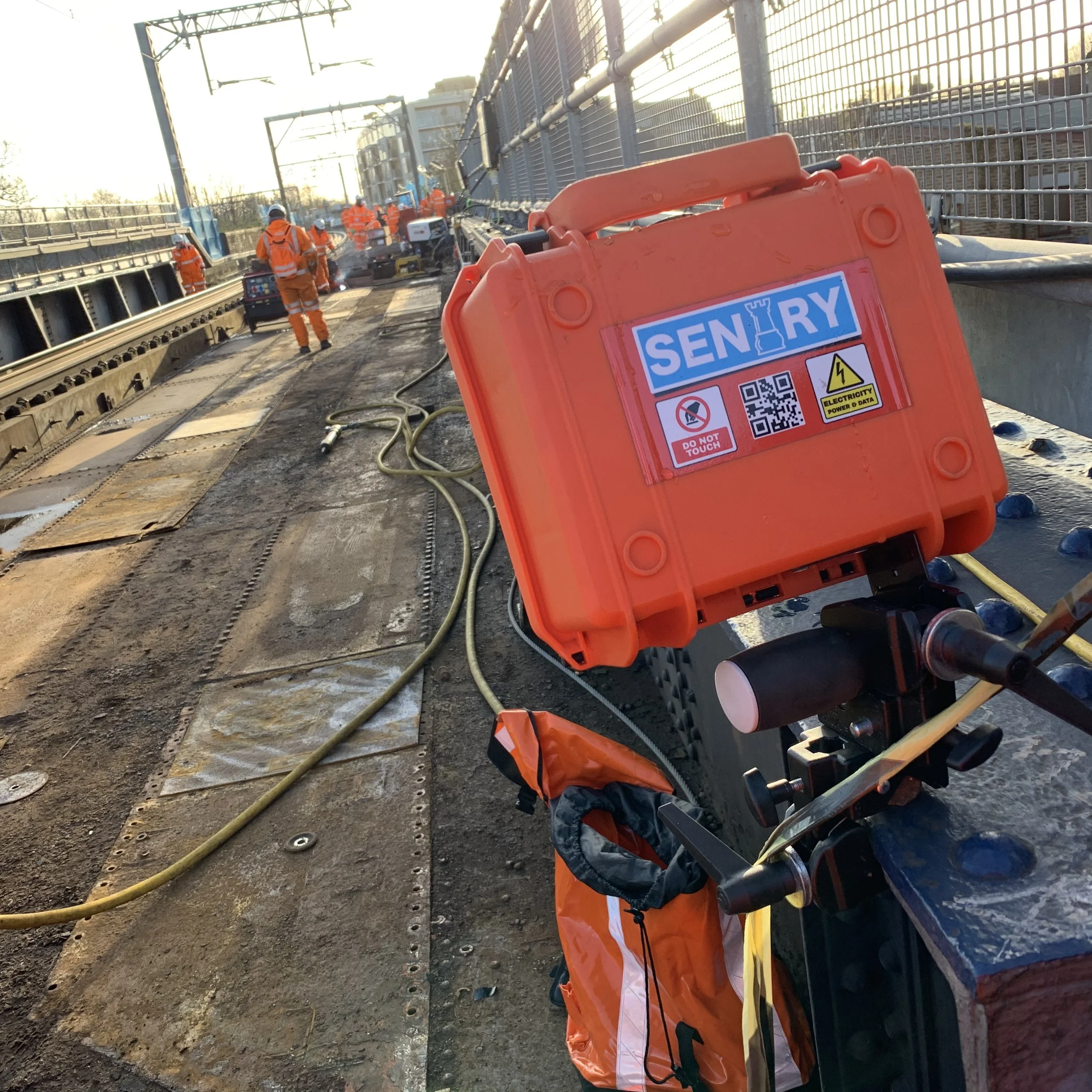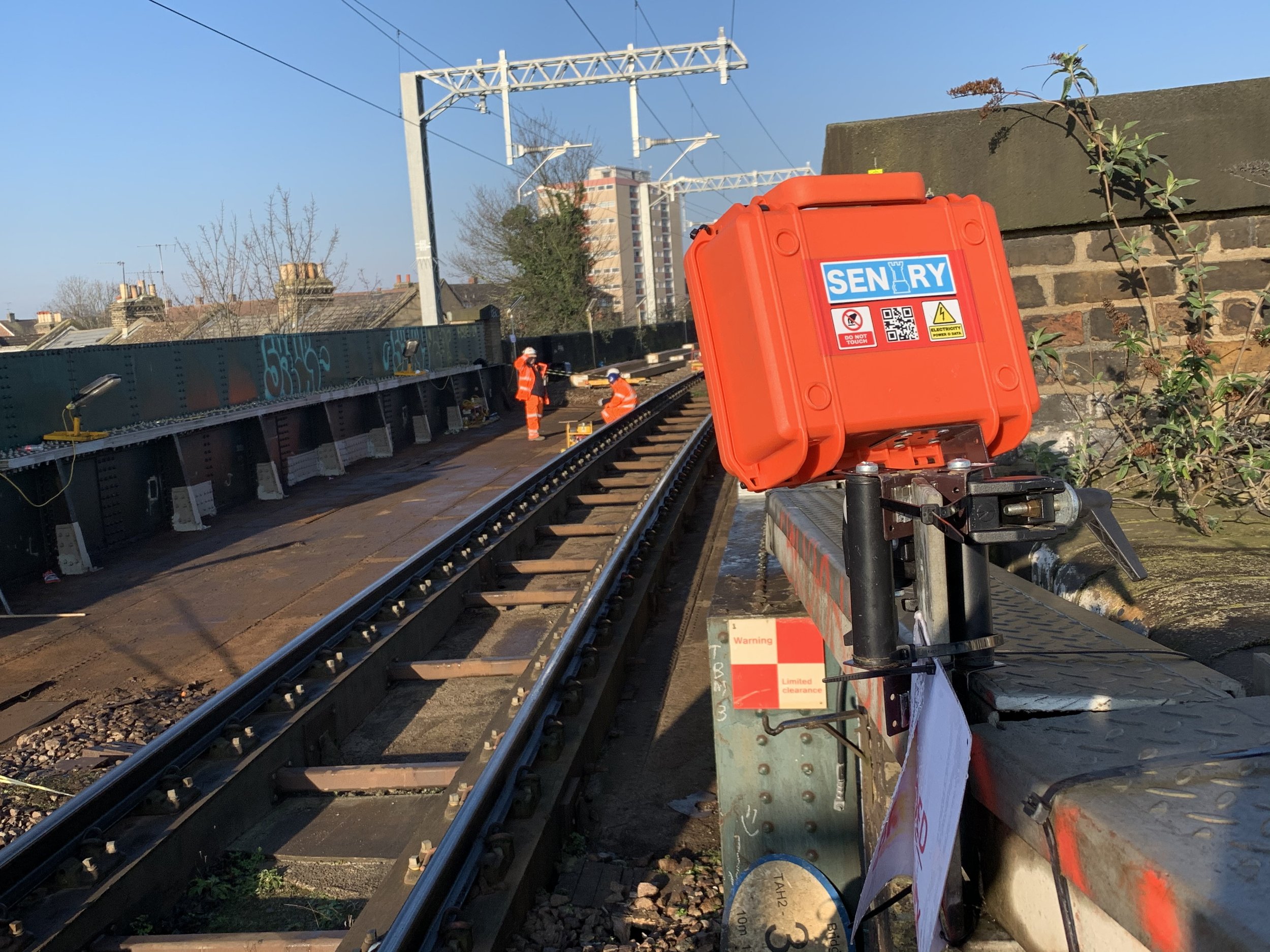Project Overview
In January, an emergency arose at Bexley in London when a derailed goods train carriage caused extensive damage to an aging bridge. Large portions of the bridge's steel structure were displaced, prompting immediate repair needs. With only one day's notice, the Sentry Camera System was rapidly deployed to monitor and support the bridge repair. The primary goals were to improve process efficiencies, enable remote management, and ensure site safety and security during these urgent repairs.
Challenges Encountered
Short Notice and Reactive Planning: Due to the emergency nature of the project, the repair plans were minimal and reactive. With limited time for detailed scheduling, the team relied on real-time insights from the Sentry System to make swift, on-the-fly decisions that would prevent delays and further structural issues.
Site Security Concerns: The exposed derailment site, along with the urgency of repairs, heightened the need for robust site security. With numerous workers and machinery present, it was essential to control access and monitor for any unauthorised entry to ensure safety.
Environmental Hazards: Dust disturbances posed health risks to workers and could impact the surrounding environment. It was vital to monitor dust levels continuously to maintain a safe workspace and promptly address any safety issues.
Solutions Implemented
Active Monitoring with the Sentry Camera System: Sentry cameras were strategically deployed across critical points of the bridge site, providing live monitoring that allowed remote managers to track progress and make necessary adjustments in real-time. This was invaluable given the project’s tight timeline and need for flexible programme management.
Real-Time Security Alerts: During the first week, the Sentry System detected an unexpected sequence of dust disturbances across the cameras, starting with Camera 1 at the site’s east end and progressing through Cameras 2, 3, and so on. This prompted the Sentry operator to alert the site manager, who verified that no authorised personnel were scheduled to be on-site at the time.
After investigating further with nearby station security footage, the team confirmed that two individuals had trespassed onto the site around 4 AM. Using the timestamps from the dust disturbances, the team estimated the trespassers’ walking speed and pinpointed their entry location. Network Rail quickly secured this access point, preventing further unauthorised entry and enhancing overall site security.
Enhanced Process Efficiencies: Sentry's continuous site coverage empowered the project management team to make informed decisions without needing to be physically present. This ability to remotely manage and adjust the programme led to efficient resource use and minimised delays. By facilitating real-time adjustments, the Sentry System ensured the project stayed on track despite the reactive nature of the initial plans.
Results and Key Takeaways
Improved Security and Safety: The Sentry System enhanced site monitoring and unexpectedly served as a security measure by detecting unauthorised entry through environmental changes, such as dust disturbances. This allowed for the prompt identification of trespassers, enabling Network Rail to secure vulnerable points and protect the worksite. This incident highlighted the potential of the Sentry System as a security tool.
Operational Efficiency: Real-time monitoring from the Sentry System facilitated swift decision-making, boosting operational efficiency. Remote management could oversee progress and make programme adjustments quickly, reducing downtime and improving workflow continuity during the emergency repairs.
Innovative Security Applications: The deployment revealed a new use for the Sentry System—detecting human presence through environmental changes. This capability opens up new applications for Sentry in remote or high-risk sites where traditional security methods might fall short.
Scalability for Future Projects: The success of the Sentry System in this emergency deployment underscores its potential for future infrastructure projects. Its flexibility, real-time monitoring, and security features make it an effective tool for managing urgent, complex operations.
Conclusion
The emergency deployment of the Sentry Camera System at the Bexley Bridge repair site demonstrated the value of real-time monitoring and remote management in critical infrastructure projects. By enabling swift decision-making, enhancing site security, and improving operational efficiency, the Sentry System played a vital role in the successful completion of the repairs. Additionally, its unexpected security applications suggest broader uses in safeguarding high-risk locations. The deployment not only addressed the immediate needs at Bexley but also established the Sentry System as a valuable asset for the construction and security industries.


